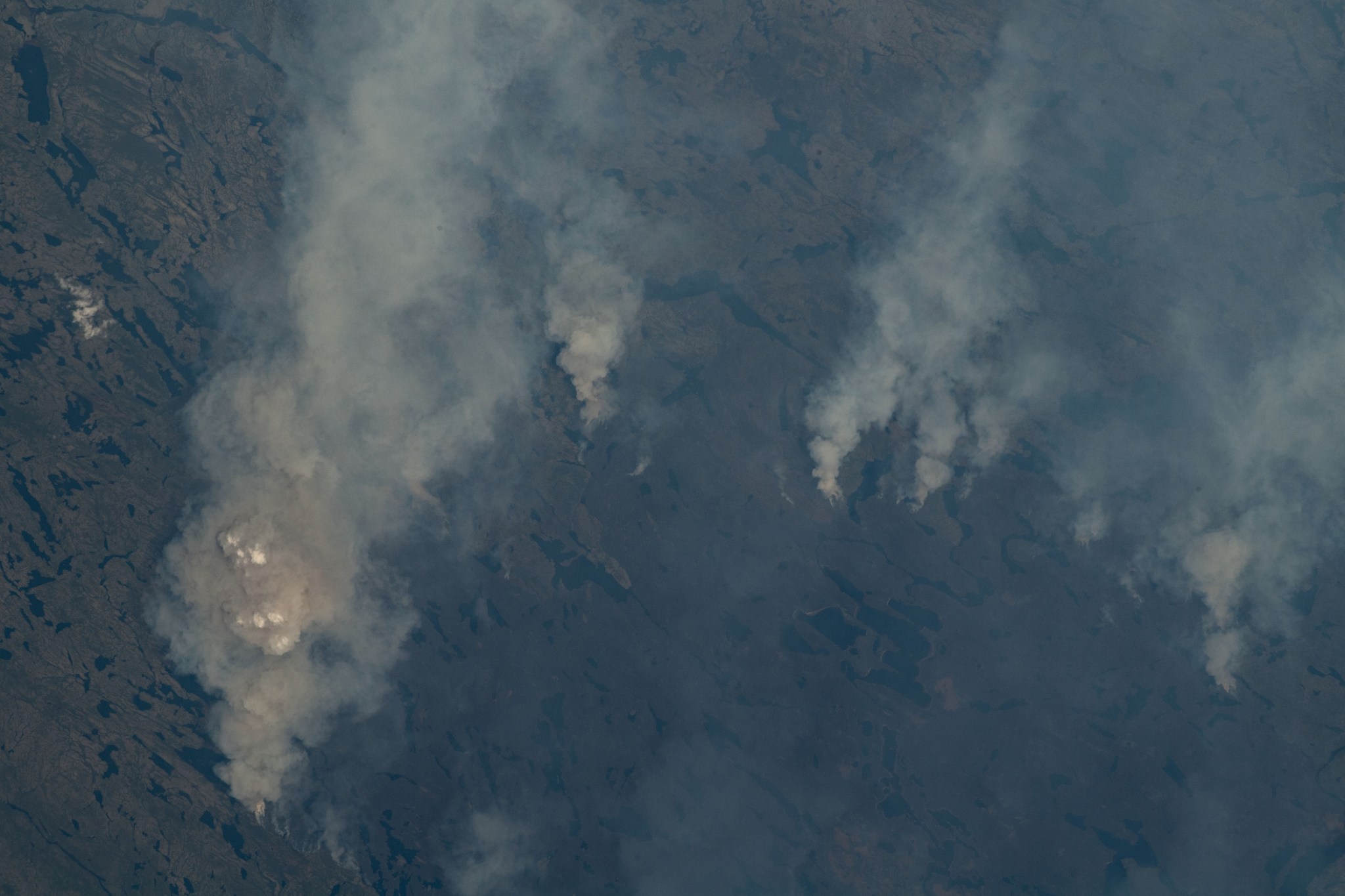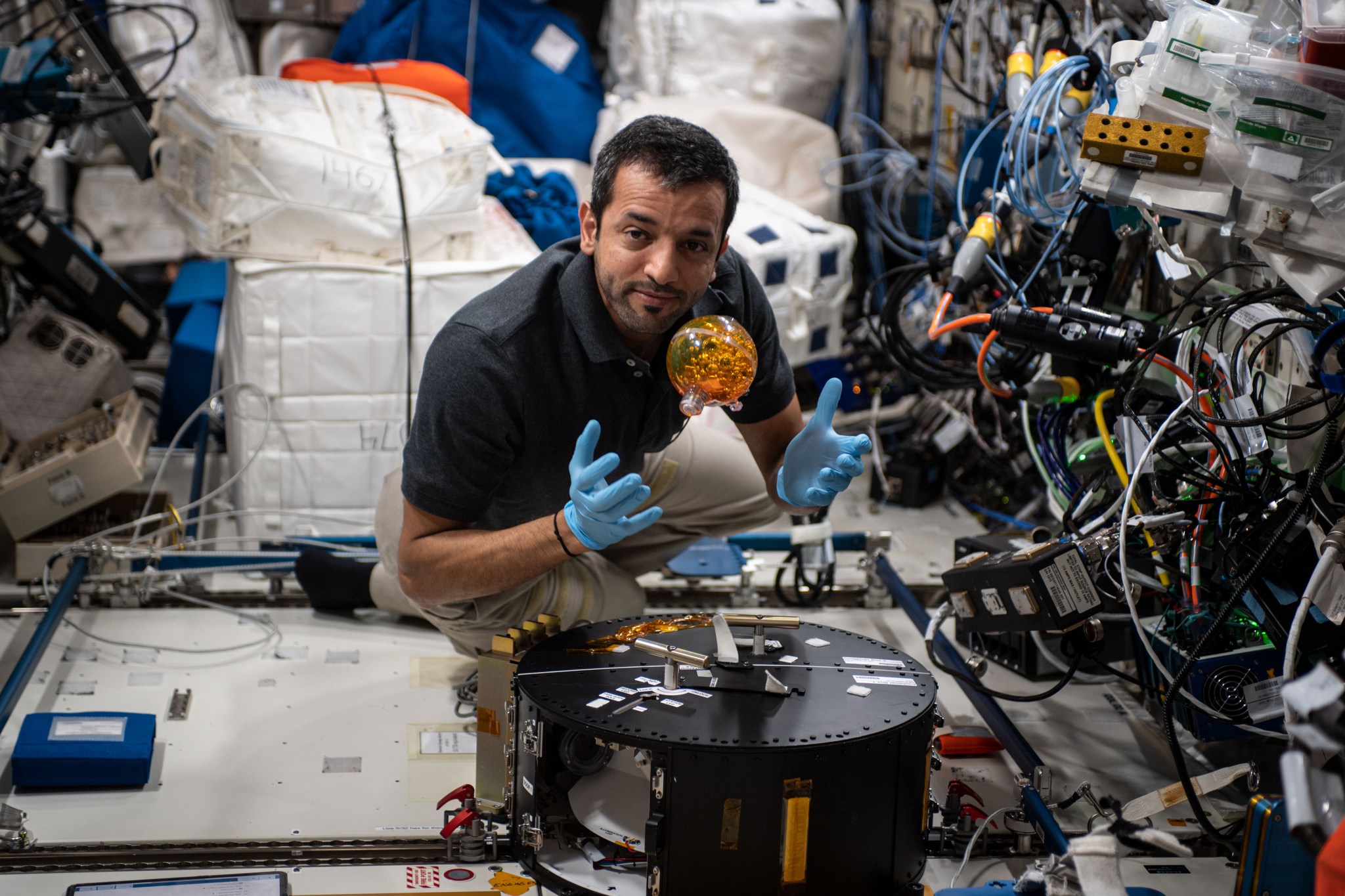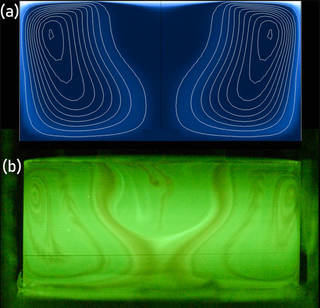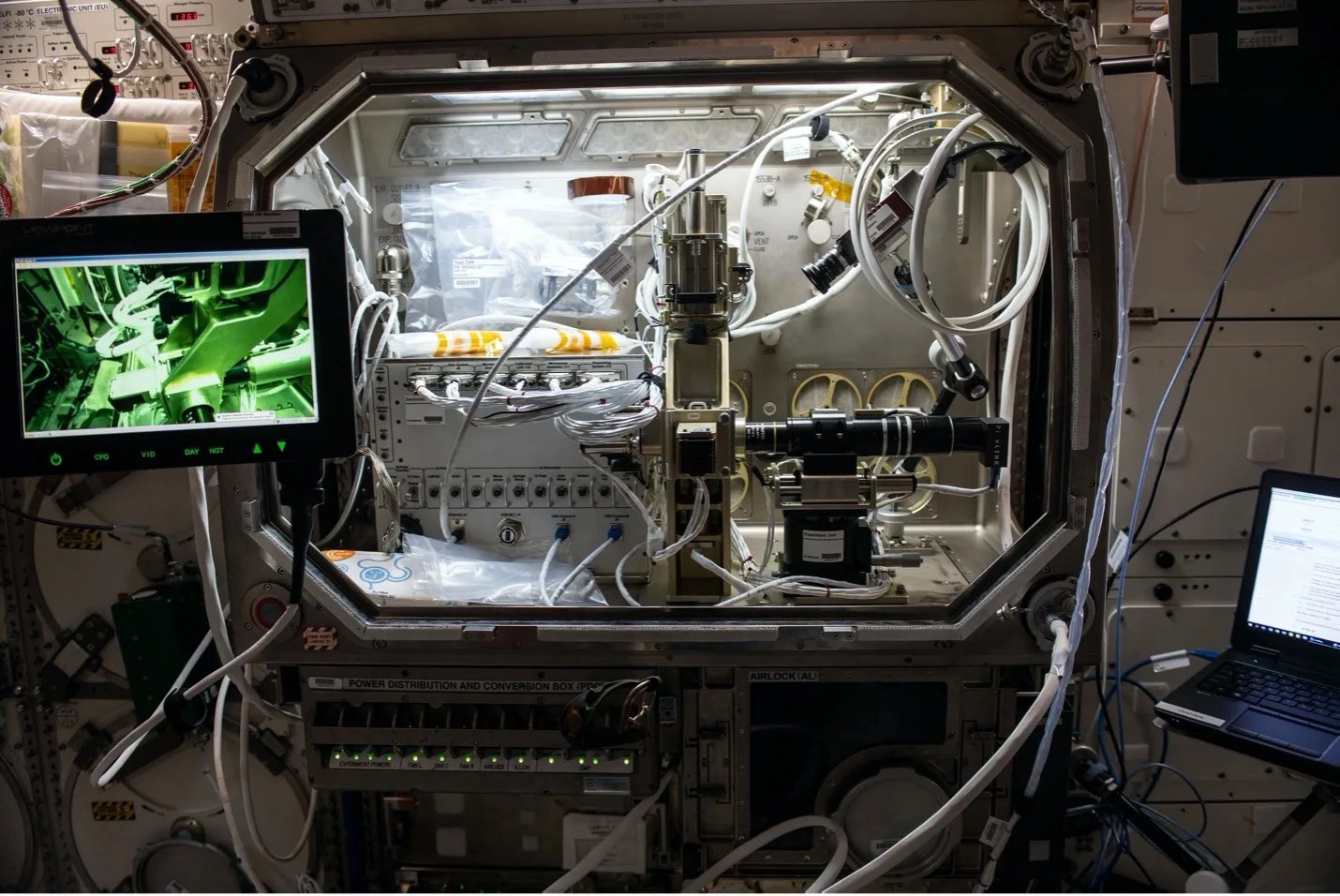Crew members aboard the International Space Station conducted scientific investigations during the week of June 19 that included evaluating the behavior of liquids in a tank, demonstrating radiation-sensing technology, and examining solidification of metallic alloys in microgravity.
Here are details on some of the microgravity investigations currently taking place aboard the orbiting lab:
Improving Fluid Management
An investigation from ESA (European Space Agency), FLUIDICS evaluates sloshing and turbulence of liquids inside a sphere that simulates a fuel tank in microgravity. Results could optimize designs for satellite fuel systems, improving fuel management for maneuvering and thereby increasing satellite lifetime. This investigation also could improve climate prediction systems, optimize the use of ocean renewable energy, and provide a better understanding of Earth’s oceans, including the phenomenon of rogue waves. Crew members installed hardware and performed troubleshooting for the recording system.
Mapping Space Radiation
RadMap Telescope, sponsored by the ISS National Lab, demonstrates new technologies for sensing radiation in spacecraft. A major challenge to future deep space missions is overcoming radiation and its effects on the body. More detailed knowledge about the effectiveness of different materials at shielding from radiation supports the design of safer spacecraft, habitats, and vehicles for those missions. This technology also has potential applications in settings on Earth that require precise radiation characterization, including medical facilities. During the week, crew members relocated hardware in anticipation of future investigation runs.
Taking a Close Look at Solidifying Alloys
MSL SCA-Batch 2b-ESA, an investigation from ESA, examines the organization of different phases as metallic alloys solidify. The experiment examines two specific phases and contributes to numerical models that predict the structures formed in those phases. Results could support the development of lightweight, high-performance structural materials for use on space missions. A better understanding of the chemical and thermal properties of these alloys also could improve materials for industrial applications on the ground. Crew members exchanged sample cartridges to conduct a run of the experiment during the week.
Other Investigations Involving the Crew:
- Four Bed CO2 Scrubber demonstrates a technology for removing carbon dioxide from the air inside of spacecraft. Improved reliability and performance of carbon dioxide removal systems could help maintain the health of crews and ensure the success of future missions.
- Ring Sheared Drop-IBP, sponsored by the ISS National Lab, studies high-concentration protein solutions and tests computer models for predicting their behavior. Results could enable production of next-generation medicines and improve in-space manufacturing and 3D printing.
- ISS Ham Radio provides students, teachers, and others the opportunity to communicate with astronauts using amateur radio units. Before a scheduled call, students learn about the station, radio waves, and other topics and prepare a list of questions based on the topics they have researched.
- Monoclonal Antibodies PCG, sponsored by ISS National Lab, assesses the crystallization of lab-created immune system proteins. Microgravity enables production of higher quality crystals, and this investigation could support development of drugs with reduced cost, improved stability, and greater ease of administration.
- Food Physiology documents the effects of an enhanced diet on human adaptation to spaceflight. Results could support development of targeted, efficient dietary interventions to maintain crew health and performance and improve understanding of how complex organisms adapt to spaceflight.
John Love, ISS Research Planning Integration Scientist
Expedition 69

































